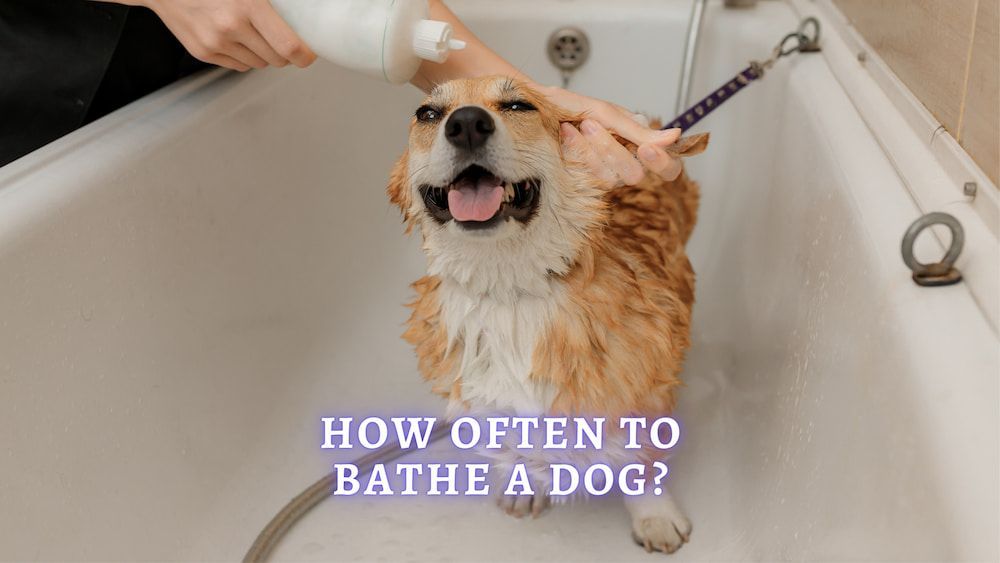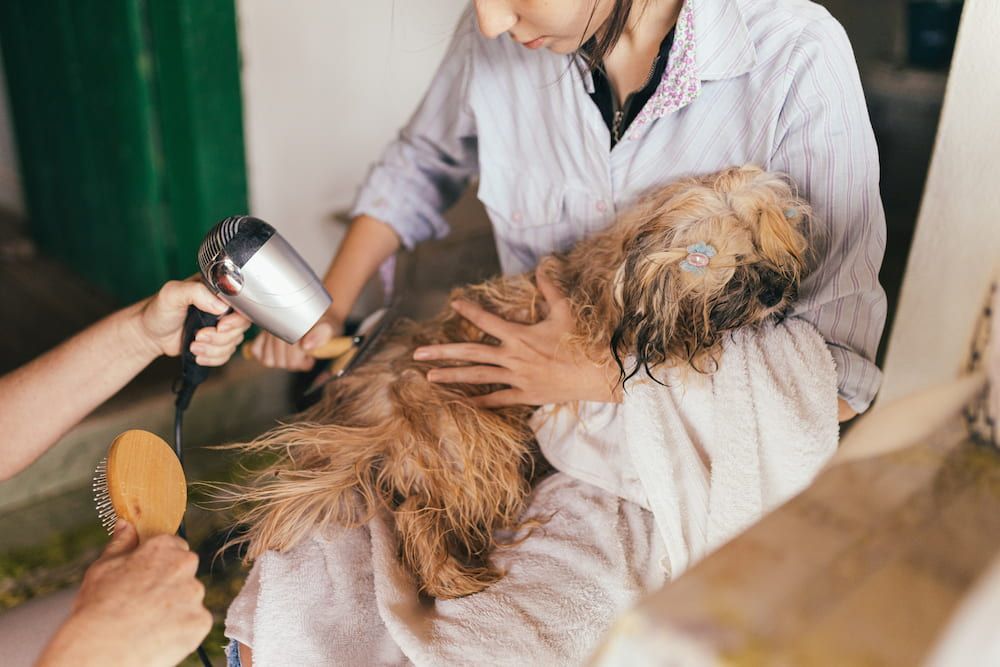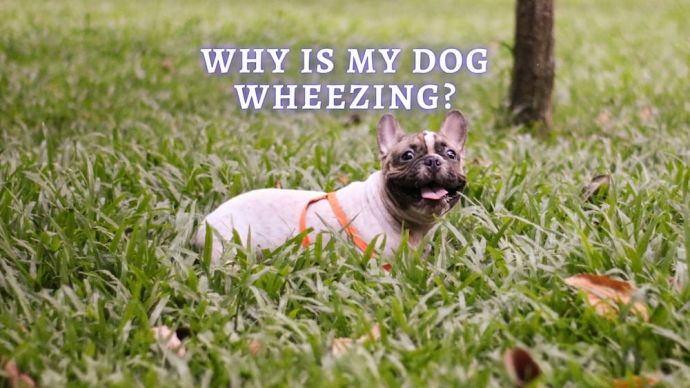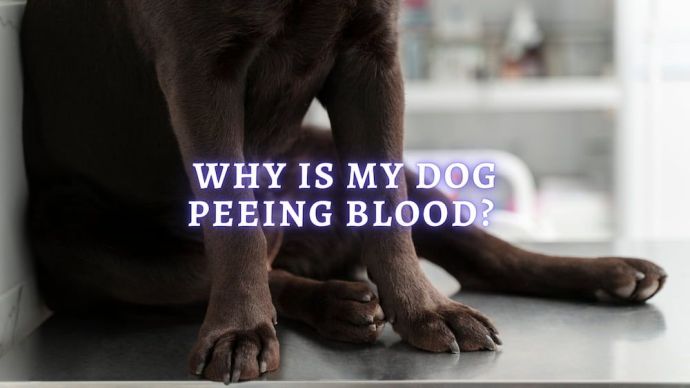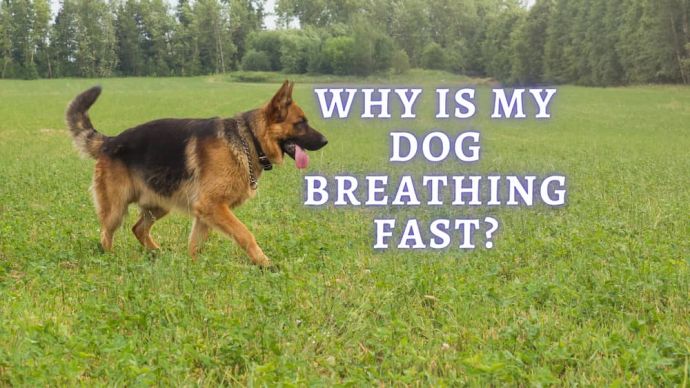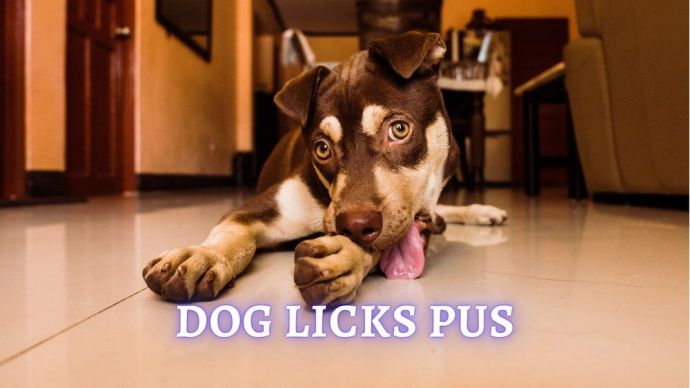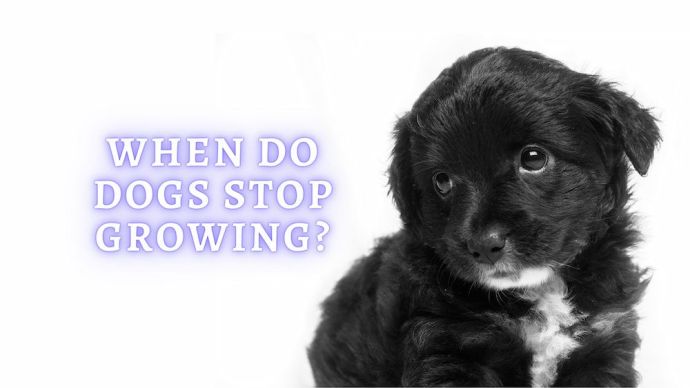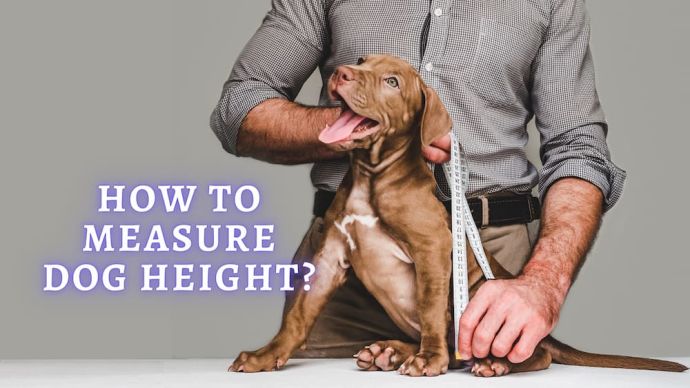How Often Should You Bathe Your Dog? (Vet Approved)
Written by:
Author: Vicki Smirnova
Vicki Smirnova is a professional writer and editor who adores animals and helps readers get along well with their pets. She has been working in digital media for more than 5 years and has great experience writing content about lifestyle, including pets. Vicki specializes in dog health and nutrition, cat feeding, dog training. She is an aquarium lover and is passionate to write about fish care at home. Also, Vicki headed several websites and worked as a news editor.
View all 245 articlesLearn about our editorial process and veterinary review board.
Reviewed by:
Veterinary review
by Dr. Sara Ochoa
Dr. Sara Redding Ochoa is a veterinarian with many years of experience and higher education. During her time in veterinary school she was able to learn form some of the most well-known veterinarians from all over the world. Sara lives happily with her husband Greg and her babies Ruby the schnoodle, and Bam-Bam her bunny. Dr. Sara Redding Ochoa has a passion and love for animals that makes her a wonderful asset to our team.
View all 13 articlesLearn about our veterinary review board
Viewed: 80
Updated on: 12/28/2022
Hygienic care of a dog is one of the duties of responsible dog owners. Bathing is an essential part of hygiene. In addition, during washing, it is easier to check the pet for fleas, scratches, cuts, and other unpleasant phenomena. However, determining how often you should bathe your dog can be tricky. With so many different types of dogs and differences in dogs’ lifestyles and health needs, there is no universal answer to this question. How to choose the right bathing frequency for your pet, see the article.
How do I know it’s time to bathe my dog?
B
Bathing eliminates dust and dirt, helps refresh the coat, and removes odors and dead dog skin cells. But pets need water procedures much less often than people. Bathing too often can be dangerous. Usually, pets are bathed in three cases:
- for treatment;
- to improve the appearance;
- to get rid of dirt and dust.
It is recommended to make a bathing schedule with the help of a veterinarian or a professional groomer. Your veterinarian can help determine the main factors that affect your pet’s bathing frequency. For example, the more frequent bathing of bathing depends on the type of coat:
- Drop coat type. This type of coat consists of guard hairs only, similar to human hair, and has no undercoat. Breeds of this type of coat are: Yorkshire Terrier, Maltese, Shih Tzu, and Chinese Crested. It is recommended to wash them once every 7-10 days. Use a shampoo and natural oils conditioner designed to hydrate and nourish. You can make masks once a month.
- Double-coated type. This type of coat has a longer guard hair and a short, fluffy undercoat. Breeds: Spitz, Labrador, Shepherd. It is recommended to wash them once a month or less. Without exception, all types of wool need hydration and nutrition. But also representatives of breeds with a two-level type can use cosmetics for volume or texture. You can also use masks to restore and moisturize, especially during the molting period. It is very important to dry the undercoat after washing.
- Wire-haired type. This type of coat has a stiff guard and undercoat. Breeds: all varieties of schnauzers, wire-haired dachshunds, fox terriers. We recommend using a texturizing shampoo and moisturizing conditioner. Washing should be done once every 3-4 months. Rigid wool is so arranged that it is less susceptible to pollution. A hard awn lies on the dog’s shell and the dirt bounces off it. And even if the wool gets wet and dirty, then after drying, the dirt itself crumbles.
- Smooth coat type. This type of coat has an awn. Breeds: smooth-haired Dachshunds, Dobermans, Bulldogs. A feature of this type is constantly updating. You can wash it as often as you want, from once a week to once every 6 months. Also, don’t forget to use a moisturizing shampoo and natural oils conditioner. After washing, be sure to dry it with a hairdryer.
- Curly coat type. This type of coat has an awn and a spiral-shaped undercoat. Breeds: Poodle, Bichon Frize, Bichon Bolognese. Washing is recommended once every 7-10 days. Use shampoo and conditioner for volume.
- Corded type of wool. This type of coat has an awn and undercoat of the same length. The wool is so soft that it falls into cords, a kind of dreadlocks. Breeds: Komondor, corded poodle, puli. Washing is recommended once every 6 months. Use shampoo and conditioner aimed at nourishing and moisturizing. But you need to monitor the cords daily. Examine the coat after each walk for the presence of foreign objects. Sticks, thorns, and other plant debris can get stuck, which can cause discomfort to your pet.
- Hairless dogs. This type has no hair, thus, the dog’s skin is prone to even more damage. Breeds: Mexican Hairless Dog, Peruvian Dog, American Hairless Terrier. It is recommended to wash these pets once a week. Use a mild moisturizing shampoo, body scrub, and moisturizer/serum. Since the skin is not protected by wool, it becomes more vulnerable to environmental influences. Therefore, all our efforts are aimed at moisturizing and protecting it.
Groomers and veterinarians urge you to choose high-quality cosmetics. Choose trusted brands. Make your purchases in trusted pet stores or veterinary clinics. Take care of the health of your pets. If you have difficulty choosing cosmetics for your pet, you see that the dog’s coat is of poor quality, there is dandruff or itching, then contact our specialists for examination and advice.[1]
How often to bathe a puppy?
How often to bathe a puppy? This a common question of pet parents for which there is no single answer. How often you can wash a puppy depends on the breed, the condition of the dog’s coat, the body as a whole, and the state of the environment in which the pet lives.
The minimum age you can bathe your dog is 3 months, and responsible dog breeders will not give a puppy to a new pet parent before this time. At 3 months, the baby already has more or less strong immunity, and bathing, if done correctly, will not cause him any harm.
If the dog is not dirty in the first days after the move, it is unnecessary to wash it. A change of scenery is always stressful, and bathing will only worsen it. Before moving on to hygiene procedures, wait until the puppy adapts and begins to trust you.
You don’t need to bathe your puppy after every walk. But washing the paws is a must, because dirt, microbes and a reagent accumulate on them. To do this, use plain warm water or water with a special shampoo (or medicated shampoo), depending on the strength of the dirt. After washing, the paws must be thoroughly dried.
READ MORE: Best Online Dog Grooming Courses
How properly bathe a dog?
First, you need to prepare the dog, place and shampoos for the procedure. It is also worth making sure that the water is at the optimum temperature. The main stages of preparation for bathing:
- Comb the pet. Dog hair can fall out profusely, especially during shedding, illness, or in older animals. To prevent tangles and clogging of the drain in the bathroom, it must be combed before each bath. Dogs with double coats (malamutes, Samoyeds) should be combed more often than bathing. So the fallen hair and dirt are removed better.
- Water temperature. The optimum water temperature for bathing dogs is 98°F.
- Cosmetics. Skin acidity levels vary between humans and dogs. If animals are washed with human shampoo or soap, the pH balance will be disturbed, and the skin’s barrier properties will be damaged. Therefore, a special dog shampoo (or medicated shampoo) is the only thing with which you should bathe your pet.
Prepare the area before bathing. Line the bathroom with towels. Prepare shampoo, conditioner and cotton swabs. You may need a dog toothbrush, paste, and protective eye ointment.
- Protect your dog’s ears with cotton swabs. Treat your eyes with a protective ointment.
- Turn on and adjust the water. Draw water about a third of the dog’s height.
- Gently place your pet in a tub or pet wash basin.
- With warm water, gradually moisten the wool from the bottom up.
- Shampoo the coat from the tail to the neck.
- Rinse off the shampoo and repeat lathering.
- Rinse off the shampoo and carefully remove its remnants.
- Apply conditioner.
- Brush your pet’s teeth and ears (optional).
- Drying a pet with a hair dryer is not always convenient – it is difficult to regulate the heat, and often the noise of the device causes great fear. Care with professional products is best left to the groomer.
READ MORE: Best Shampoo for Shih Tzu
It is convenient to wash a small dog in a basin or kitchen sink. A small dog can be washed much faster than a large one. Her bathing is best combined with brushing her teeth and treating her ears.
Bathing large dogs takes more time and effort – brushing your teeth and ears is better at other times. Before you wash and clean the paws of a large dog, make sure that he feels confident and stable. To do this, put a rubber mat on the bottom of the bath. If the pet hates washing, they may be defensive or hiding. How to wash an aggressive dog if it snaps or bites? Use a soft muzzle and shampoo that does not irritate the pet’s eyes. Make sure that water does not get on the muzzle.[2]
Frequent Questions
Is it OK to bathe your dog once a week?
The need for water procedures is determined individually; the frequency of bathing can be recommended based on data on the state of health, breed, and activity level. Dogs that spend most of their time outdoors will need a bath more often than those that spend most of the day indoors.
Do dogs feel better after a bath?
Many dogs do not like to take baths. Dogs love a good massage, but most don’t like bathing.
What happens if pet parents don’t bathe your dog?
Bathing your dog regularly is beneficial. Clean dogs are less likely to cause allergic reactions and problems with the respiratory system in the pet parents of the animal. Dog hair, like a carpet, retains dirt, which contains allergens, fungi, and bacteria. Check with your veterinarian to determine the correct bathing frequency for your dog.
Article Sources:
- Kramer, David F. “How Often Should You Bathe Your Dog?” PetMD, 16 Feb. 2017, petmd.com/dog/grooming/how-often-should-you-bathe-your-dog.
- “Bathing Your Dog.” Petplan, petplan.co.uk/pet-information/blog/how-to-bathe-a-dog/.
 Dog Veterinary Tips Why is my Dog throwing up: Causes and Preventing (Veterinary Advice)
Dog Veterinary Tips Why is my Dog throwing up: Causes and Preventing (Veterinary Advice) - 21356
- 5
 Dog Care My Dog Keeps Scratching His Mouth: Reasons Why Your Dog Scratching Face
Dog Care My Dog Keeps Scratching His Mouth: Reasons Why Your Dog Scratching Face - 16545
- 1









